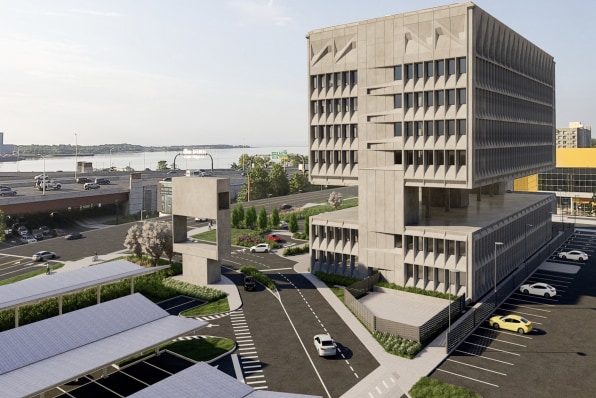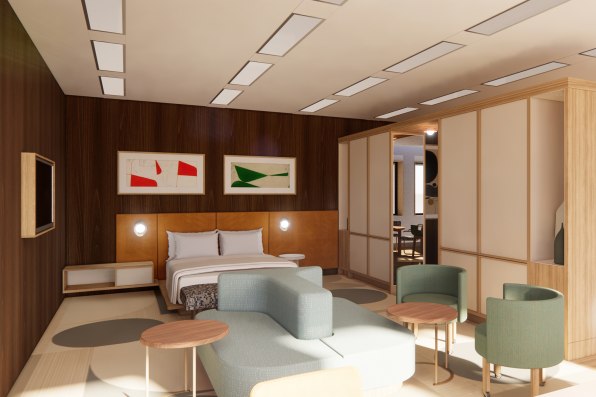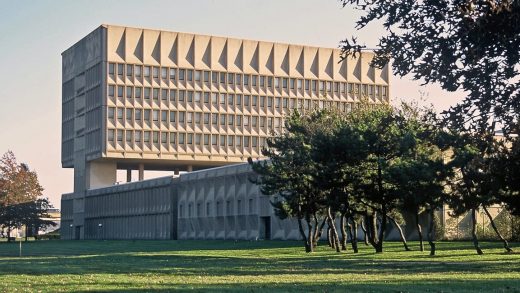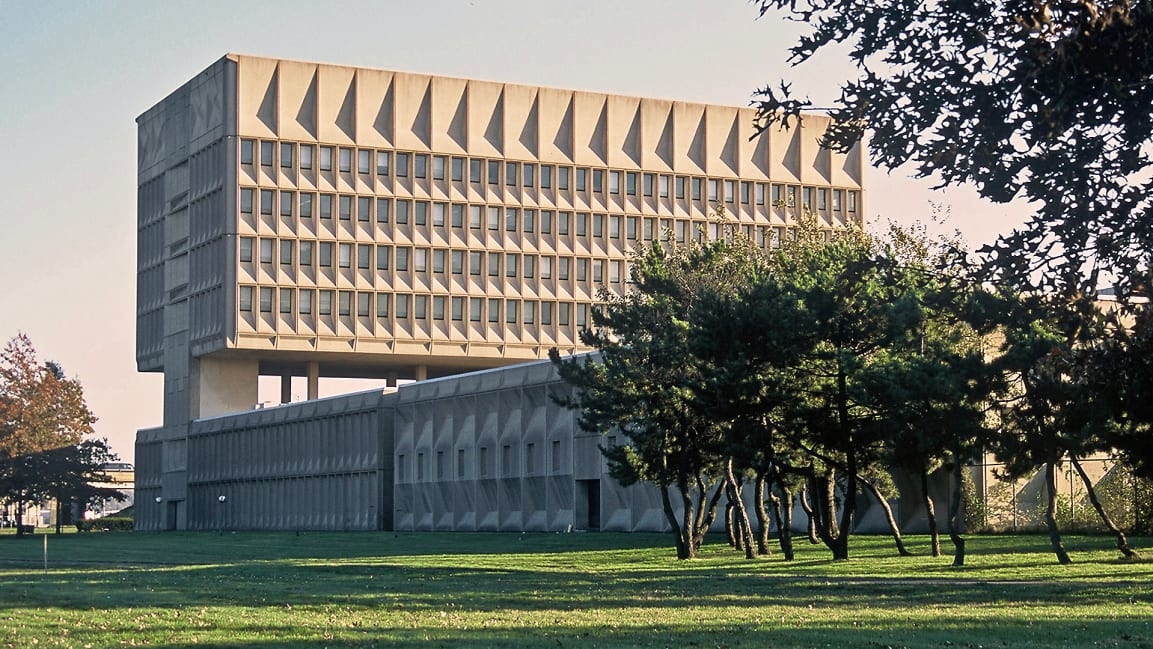A Brutalist building by a Bauhaus master is reborn as a net-zero hotel
After sitting vacant for decades, a gem of Brutalist modern architecture in New Haven, Connecticut, is being given a second life. And it’s surprisingly energy efficient.
Built to house the Armstrong Rubber Company, and later tiremaker Pirelli, the former office building has been redesigned into a 165-room hotel by the architecture and development company Becker + Becker. Unlike most adaptations of Brutalist concrete buildings – and very unlike most energy-sucking hotels – the new version of this historic building will produce net zero emissions, providing all of its own electricity, heat, and hot water.

Designed in 1967 by Marcel Breuer, the Bauhaus-trained furniture maker and modernist architect, the building is a statuesque nine-story tower of gridded concrete, with a chunk of its midsection removed to reveal just the concrete pillars that provide its structural support. Connecticut-based architect and developer Bruce Becker had been driving past the building for nearly 20 years, admiring Breuer’s sculptural use of concrete but was bewildered by the fact that such a famous piece of architecture was unused. “I was puzzled by that, and also challenged to come up with a solution,” Becker says.
He set out to find a new way to use what had become an outdated office building and found that its size and layout would be good for a hotel. But not just any hotel. He wanted it to be a model project that suggested a new way of preserving a classic building while also designing for the 21st century. “I am, I guess, obsessed with this building and trying to do the right thing with it,” he says.

Becker designed the building to meet the highest energy efficiency standards, including the LEED Platinum and Passive House certifications. Though he says the project is an outlier in the hospitality industry–it aims to be the first net-zero emissions hotel in the U.S., based on certifications from LEED and the New Buildings Institute–it doesn’t have to stand alone. “The hospitality sector is probably one of the hardest ones to electrify, because the buildings tend to use energy more intensively,” he says. “If they have on-site laundries the convention is to use a lot of fossil fuels to run those. But it’s really just a matter of ordering different equipment.”
Combined with high efficiency heat pumps, triple-glazed windows, and low voltage power-over-ethernet wiring for the lighting, the building cuts down the total electricity it needs and uses solar panels and a one megawatt battery to provide the supply. Becker says the upfront cost of these materials and pieces of equipment were higher than what’s conventionally used, but that they’d pay for themselves through energy savings within a few years.
Preserving the architecture was also a priority. Becker partnered with the branding and interior design firm Dutch East Design to convert the interiors of the former office building into a modern but historically sensitive hotel.

“We really wanted it to be very much a juxtaposition and a counterpoint,” says Dutch East Design partner Larah Moravek. “This is such an iconic building and exterior, and it’s so strong and bold and impressive. We wanted the interior to be a respite, to be a softer underbelly, and to acknowledge and honor some of the architectural elements.”
The building’s gridded exterior geometries influenced the interior plan of the guest rooms, and the original wood paneled walls of the executive offices on the eighth floor were preserved for the hotel’s large suites. To connect with Breuer’s Bauhaus past, the rooms feature modernist cast concrete side tables and custom woven quilt wall art inspired by fellow Bauhaus designer Anni Albers.
“Obviously we’re going to make sure we get a Breuer chair into it,” says William Oberlin of Dutch East Design. “We didn’t want to make a museum to Breuer, but we wanted to have some subtle nods here and there.”

The hotel’s construction is nearly complete, and it’s slated for an opening in January. At an estimated $200 per night, rooms are expected to compete with other boutique hotels in the area. Becker says Dutch East Design’s interior work is making the building’s transition from office to hotel a smooth one, and the “24/7” work he’s been doing for the past few years will ensure that the classic building lives on. More importantly, though, he’s hoping that turning this historic piece of architecture into a highly energy-efficient hotel will serve as a model for other adaptive reuse projects and other architects.
“We’ll be able to demonstrate that almost any building could be an all-electric building,” he says. “I just can’t see how anyone can make a building that uses fossil fuels and feel good about it.”
(73)



